When Wally Byam hung an Airstream sign above the door of a Los Angeles warehouse in the 1930s, his dreams brimmed with the vision of a travel trailer rolling down the highway like a stream of air. While he wasn’t the only one experimenting with aerodynamic shapes at the time, Wally’s travel trailer designs would endure, inspiring generations of travelers to embrace the freedom of the road, the wind in their hair, and the irresistible pull of that next adventure.
Today, the riveted aluminum shell of an Airstream travel trailer hasn’t strayed far from its roots of 90 years ago. With a continued focus on reducing our environmental impact and the increased adoption of electric vehicles by our customers, in the summer of 2021 Airstream initiated an aerodynamics study at the Auto Research Center (ARC) in Indianapolis, Indiana in order to better understand this important element of travel trailer design.
The first phase of the project utilized computer modeling while the second phase involved wind tunnel testing to understand the current aerodynamic performance of a 28-foot Airstream travel trailer. The final phase of testing gave the team the opportunity to explore how we can further improve aerodynamics in the future through advanced engineering.
Sleek, Streamlined, and Setting the Standard
Wally Byam’s early designs were inspired by the Streamline Moderne movement of the 1930s, an international style of Art Deco architecture and design influenced by the ideas pioneered in aircraft and ship designs. Where those sleek designs allowed boats, ships, and aircraft to slip through the water and air, in architecture the Streamline Moderne style can be seen in buildings, locomotives, automobiles, and appliances that feature rounded curves and sleek, almost space-age appearances.
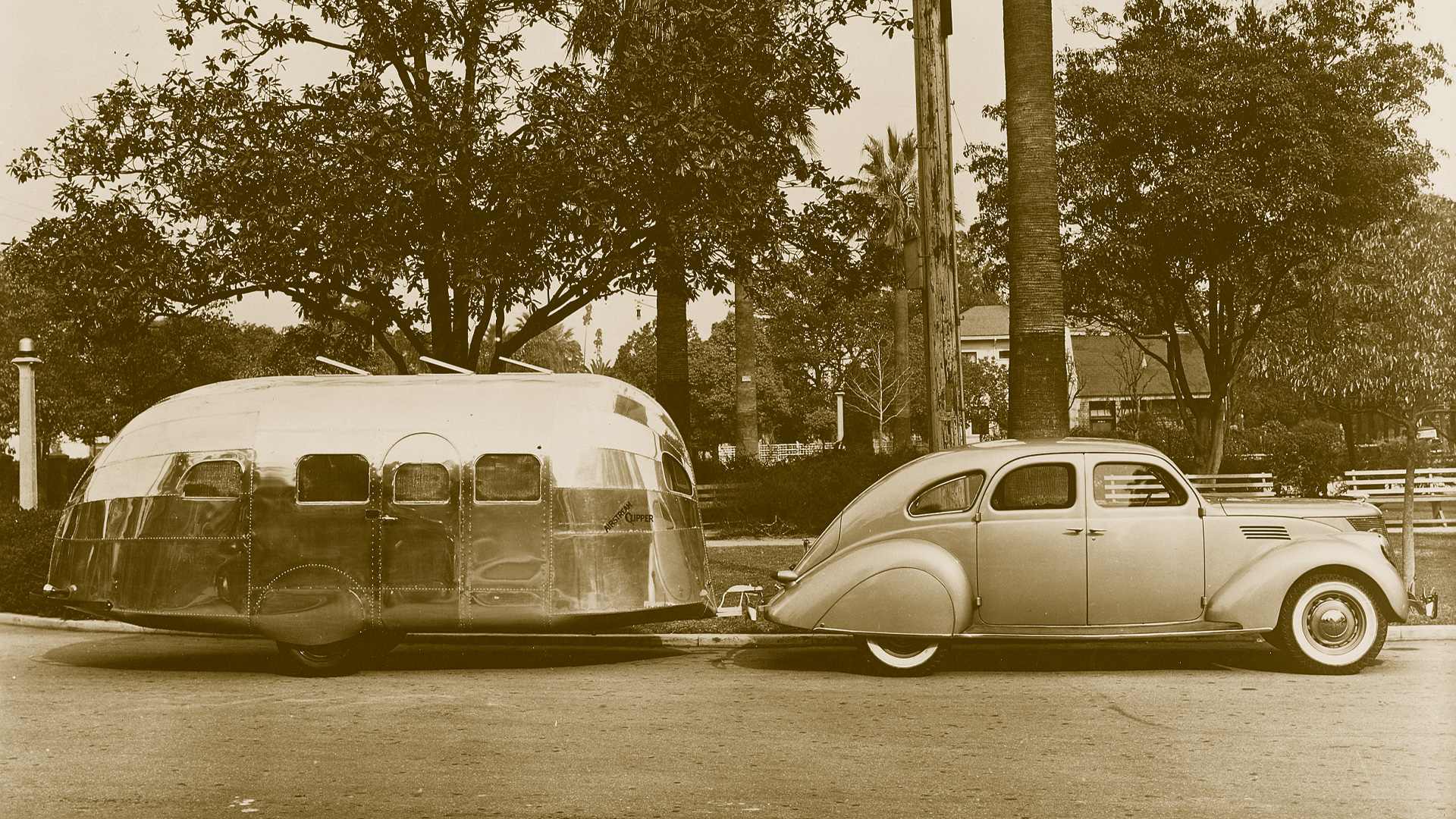
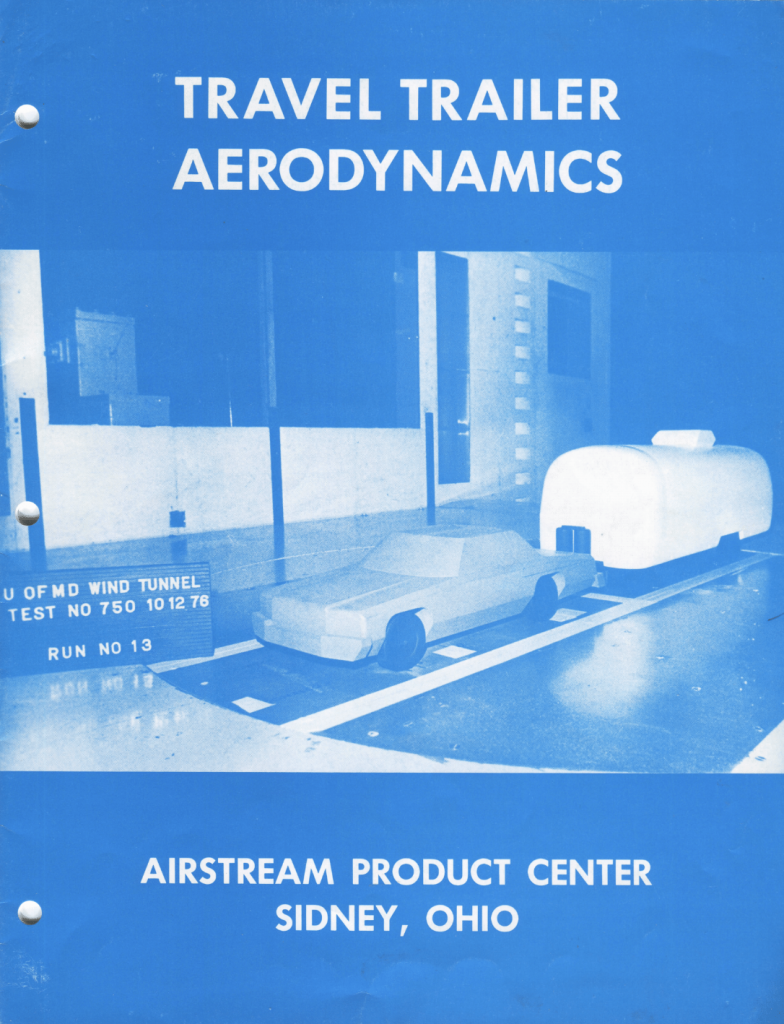
In the 1970s, a similar aerodynamics project yielded valuable data that has guided our travel trailer engineering and product development over the years. Working with the experts at ARC, we were able to explore the current aerodynamic profile of our travel trailers – and dig deeper into how we can further improve aerodynamic performance in the future.
An Iconic Design, Put to the Test
Modern aerodynamic studies use two elements: computational flow dynamics modeling (or CFD – basically a computer simulation), backed up by scale model testing in an actual wind tunnel.
In the first phase of the study, CFD simulations showed that the 28-foot Airstream travel trailer we chose to model had 25 percent less aerodynamic drag when compared to a 35-foot trailer produced by a leading brand. With that data in hand, the claims were put to the test with scale models in a wind tunnel.
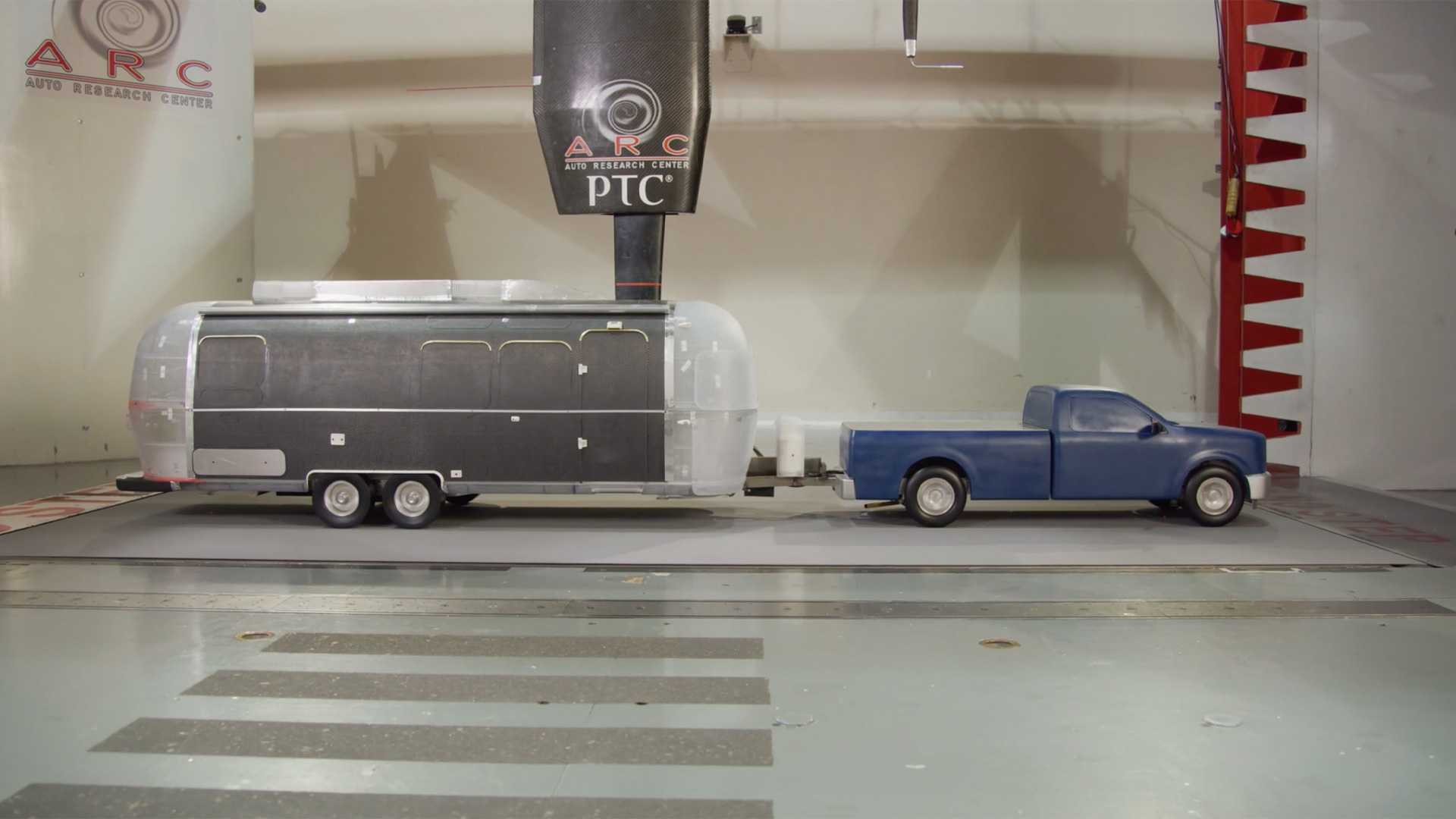
Airstream worked hand in hand with the engineers at ARC to create one-quarter scale models of a 28-foot Airstream Travel Trailer and a 35-foot conventional, boxlike towable travel trailer from a leading brand. Over the course of multiple days of testing at ARC’s state-of-the-art research laboratory, Airstream’s engineering team – led by Director of Travel Trailer Engineering, Karla Paul – set about running the models through their paces.
Each test involved mounting scale models of both a tow vehicle and the travel trailers inside a wind tunnel. As the test began, wind cycled through a massive turbine, swirling past the models as highly sensitive equipment inside the models measured the pressure created by the moving wind.
At the conclusion of these first two phases of testing, the team confirmed the results predicted by the computer simulation: A 28-foot Airstream travel trailer has 25 percent less aerodynamic drag than a 35-foot trailer produced by a leading brand.
The Next Steps in Aerodynamic Product Development
After confirming the aerodynamics of the 28-foot Airstream travel trailer, the team was able to explore ways of making an already aerodynamic design more sleek and less susceptible to aerodynamic drag. Adding, subtracting, and adjusting exterior features and components, the team worked through a variety of simulations on the model, yielding beneficial data that will guide product development as it relates to further improving overall aerodynamic performance in the future.
Because the hypotheses were tested with scale models, the engineering team was able to quickly make adjustments to the models and run multiple tests aimed at understanding how the addition or subtraction of exterior components would affect aerodynamics.
Much of the focus was on the area between tow vehicle and travel trailer – the open area around the hitch. As air separates from the top of a vehicle it becomes turbulent as it travels back toward the travel trailer. In the case of an SUV, the movement of the wind creates a vortex between the vehicle and the trailer – which in turn creates low pressure and drag, resulting in a less efficient towing experience.
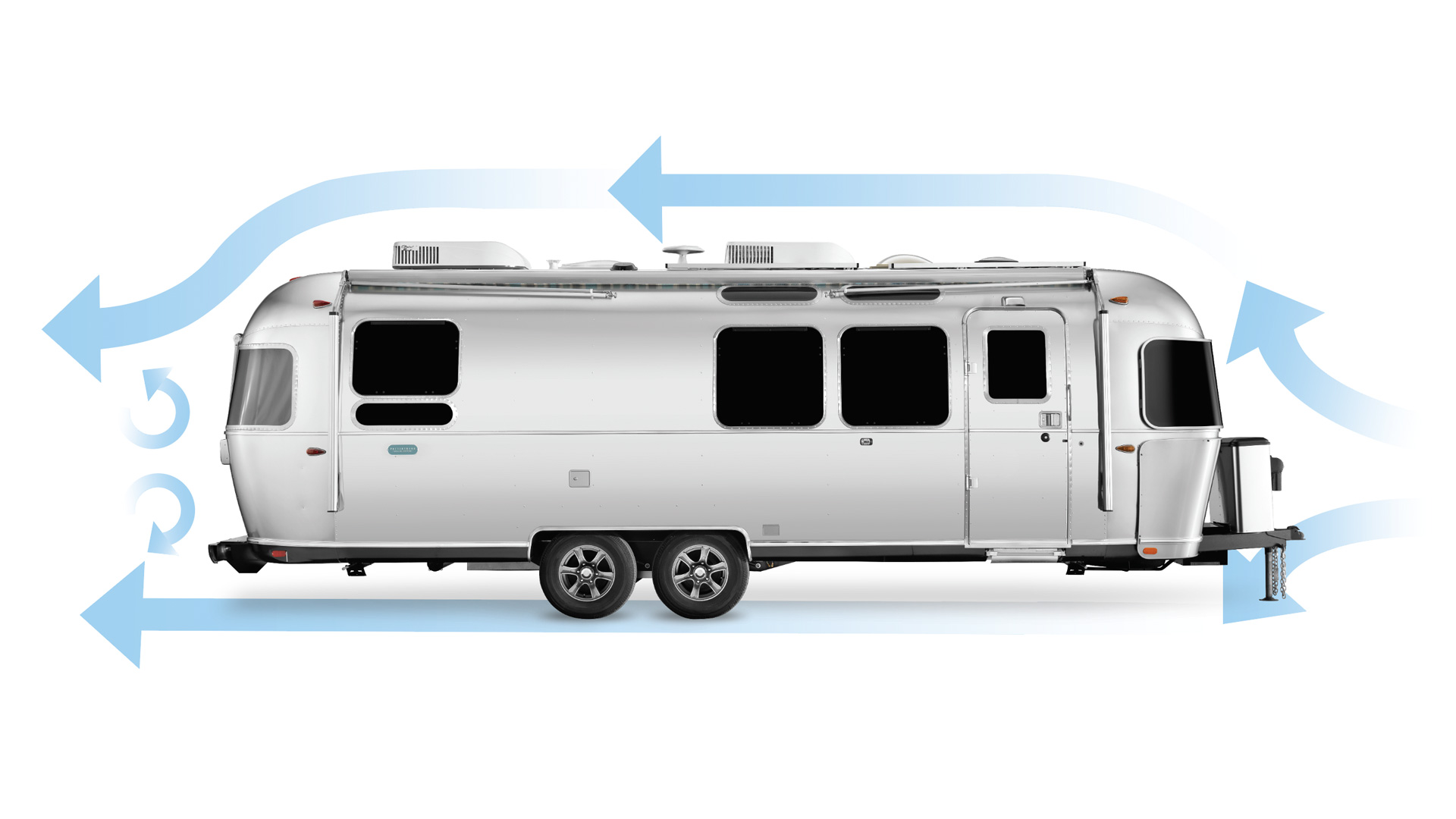
A similar situation happens when using a pickup as the tow vehicle: The air becomes turbulent as it travels the length of the pickup’s bed creating low pressure behind the truck in the hitch area. Turbulence and areas of low pressure create more work for the tow vehicle – no matter the aerodynamics of your travel trailer, this phenomenon is impossible to avoid at some level.
Possible Improvements to an Already Aerodynamic Design
One of the most effective ways of mitigating the turbulence between a tow vehicle and a travel trailer is to add various types of deflectors to help guide the air upward and around the top, sides, and bottom of the trailer.

The team was able to quickly apply a wide variety of deflectors and fairings to the scale models, testing several solutions between the tow vehicle and the Airstream and exploring how each device impacted the overall aerodynamics. Other scenarios the team tested involved moving exterior features around on the rooftop, lifting the travel trailer shell and hiding those same features in a “basement” in the chassis, and applying sleek wind fairings around rooftop air conditioners.
Making Improvements, Not Changes to the Aerodynamics
While it was easy to conclude that Airstream travel trailers are already highly aerodynamic, the team found a much more nuanced story to tell in the incremental game of aerodynamic improvement. This invaluable data will inform the engineering and product development for years, as the team looks to improve on an already incredible design.
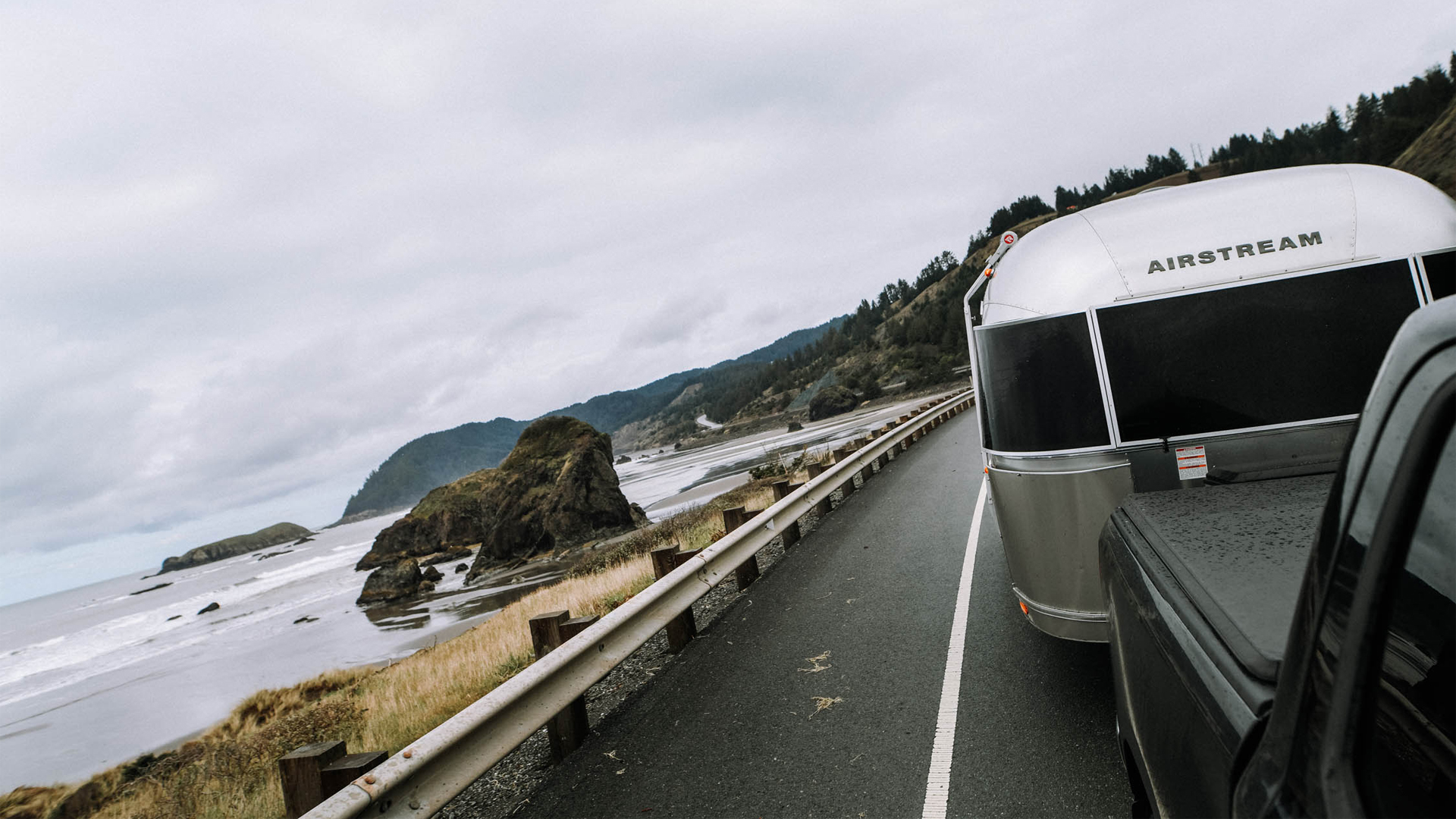
What’s clear is this: The potential for improvements on Airstream’s already aerodynamic design lies in incremental changes that eventually equate to measurable differences. Relocate this air conditioner, add this deflector to the propane tanks, streamline an awning’s design – there’s a give and take to this endeavor, one that is ultimately limited by the guardrails of cost, space, and pure physics.
Helping You Go Farther While Reducing Our Carbon Footprint
As our design team dives deeper into the ways to improve aerodynamics across the whole lineup of travel trailers, current Airstream owners can hit the road knowing they’re already towing a highly efficient travel trailer. That means fewer stops to refuel along the way, and more in your wallet for adventures once you arrive. And with more Airstreamers towing their Silver Bullet with electric vehicles – and with the technology behind EVs making great strides every year – a more aerodynamic travel trailer means you’ll have the range to go farther in between charging stops.
More importantly: An aerodynamic travel trailer means your tow vehicle is consuming less fuel while towing your Airstream, resulting in less of a carbon impact to the environment.
Learn more about what we’re doing to reduce our carbon footprint at the factory, on the road, and at the campsite.
Join Airstreamers everywhere on the Caravan to Carbon Neutral by purchasing a carbon reduction kit.
Explore and compare the entire lineup of Airstream travel trailers.









